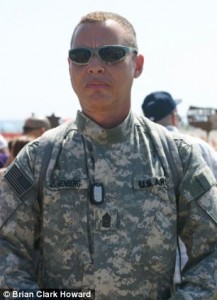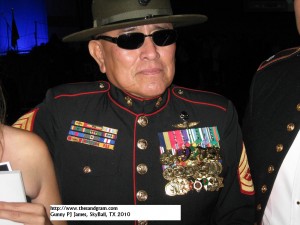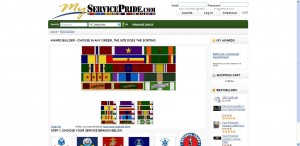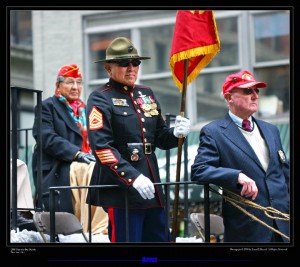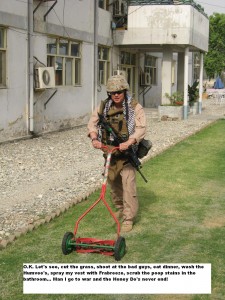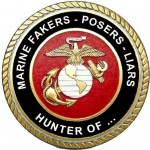June 23rd, 2011 Posted in The SandGram v1.0 | No Comments »
Transcript Of CMC Interview By Mens Health
http://www.menshealth.com/print/26174 or http://www.menshealth.com/best-life/marine-corps
GENERAL JAMES F. AMOS MARINE CORPS INTERVIEW
What’s next for the Marines? Change. In an exclusive interview with Men’s Health
chief military correspondent Bob Drury, General James F. Amos, the 35th
Commandant of the United States Marine Corps, lays out his vision
By Bob Drury, Photographs by Sgt. Benjamin J. Flores, USMC
Osama Bin Laden is dead. Revolution is sweeping North Africa, the Middle East,
and Central Asia. American troops are slated to pull out of Iraq by the end of
this year. And calls grow louder each day for a similar, ahead-of-schedule
withdrawal from Afghanistan.
Now what? Is the War on Terror over?
“Not by a long shot,” says General James F. Amos, the 35th Commandant of the
United States Marine Corps, who recently sat with Men’s Health for a
wide-ranging conversation exploring the future of terrorism, the likelihood of
America’s military engagement in this rapidly transforming world, the Marine
Corps’ return to its expeditionary roots as our nation’s first-strike
option…and just what kind of men Amos hopes to attract as potential
Leathernecks.
Amos was at home with his wife Bonnie that Sunday in May when he received word
that American Special Operators had killed Bin Laden. His first thoughts, he
recalled, were of the innocent victims murdered by Al Qaeda on 9/11. “I felt
that justice had been served and that the world was, in some way, a better place
for all of us.”
Bin Laden’s death, however, did little to alter Amos’s long-term blueprint for a
“right-sized” Marine Corps that will act as the tip of America’s military spear
for decades to come. Over the past several years, while serving first as the
Commanding General of the Marine Corps’ Combat Development Command and, later,
as the Corps’ Assistant Commandant, Amos was tasked with plotting the strategy
and tactics that the Corps will employ in hostilities through the year
2025—while taking into account the realities of a down-sized defense budget.
These potential clashes, he said, will require a more streamlined Marine Corps
that will make rapid response its first priority.
A lean, fit man and a sharp dresser—“squared away,” in Marine terminology, in
dark pressed slacks and a muted yellow sweater over an open-collared shirt when
I met him for coffee recently in Midtown Manhattan—the trim, snow-capped
64-year-old Commandant is also an eloquent speaker quick with an analogy. He
likens the Corps’ rapid-response crisis capabilities to a middleweight fighter
“who can box up into the heavyweight division or box down to the lightweight
division.” To that end he has already begun to shape his 202,000 Marines Corps
into an outfit “that fills the void in our nation’s defense for an agile force
that is comfortable operating at the high and low ends of the threat
spectrum—larger than Special Operations forces, but lighter and more
expeditionary than conventional Army units. We engage and respond quickly, often
from the sea, with enough force to carry the day upon arrival.”
In these parlous times, he added, the notion of the term expeditionary is a
“state of mind,” combining power, endurance, and, not least important, a
logistical component.
During our conversation Amos made reference to the visionary Marine General
Victor “Brute” Krulak, who a half-century ago noted, “When trouble comes there
will be Marines, somewhere, who have made and kept themselves ready to do
something useful about it, and to do it at once.”
The Commandant then updated Krulak’s words with a more modern sentiment. “When
it absolutely, positively has to be accomplished overnight…send in the
Marines.”
Since assuming command last October, Gen. Amos has shared his vision of a
re-imagined Corps in public testimony before Congress and in private speeches to
select, and powerful, policy makers. Now he speaks to Men’s Health about that
future.
Men’s Health: Under your command, the Corps is undergoing something of a sea
change. Across-the-board military budget cuts combined with the nature of
asymmetrical wars—in Iraq and Afghanistan and who knows where next—make for
strategic and tactical revisions. How do you see this future unfolding?
Gen. Amos: When I was Commanding General of the Marine Corps Combat Development
Command, as well as Assistant Commandant, I think I spent about a year to a
year-and-a-half writing the “Marines Corps: Vision & Strategy Through 2025.” It
was, basically, what I thought the world was going to look like over the next 2
decades and the Marine Corps’ role in that world. I think we’re going to
eventually come out of Afghanistan. You know we will, just as the Marines came
out of Iraq a year and a half ago—with the exception of about 80 Marines that
are still on staffs.
That said, I believe going forward that the world is going to be full of these
nasty, difficult, unclear conflicts that are going to be energized by poverty,
by stateless borders, and by the proliferation of state-like weapons in the
hands of organizations that are not in and of themselves states. Typically in
the past, these kinds of weapons could only be afforded by states, by countries.
Now they will be used on battlefields by rebels, by rogue organizations, even by
criminal gangs.
Urbanization will also play a large role in future conflicts. We used to say 70
percent of the world’s population lived within 400 miles of an ocean. Now, 70
percent of the world’s population lives within 200 miles of a coastline. If you
look at this globally, Western and Central Europe are declining in total
population, but the population in developing countries along these coastlines
and littorals is growing exponentially. And within this exploding population
what you’ve got is this cataclysmic collision of poverty and the high
demographic of young males who are not going to have a job. There’s going to be
competition for resources. There will be places where clean, potable water will
be just as valuable as a gallon of fuel for your vehicle.
These circumstances will breed extremism. And it doesn’t have to be just
religious extremism, the kind we’re seeing now, but extremism of varying
natures. Criminal extremism. Political extremism. And these places I’m talking
about will be, I think, the Marine Corps’ back yard for the next two decades.
That’s where we’re going to do our business.MH: Can you give an example of how
this might play out?
Gen. Amos: You just look at the world and you see things unraveling and you say,
“I wonder what we ought to do?” Things are seldom crystal clear. The perfect
example: Look how long we debated whether to impose a no-fly zone over Libya. So
you need a force like the Marine Corps that can plug that gap for a while until
the United States’ course of action becomes clear. And plug it quickly. If
you’re not ready the moment things happen, then you’re irrelevant, you might as
well not go. So that’s what we do. We buy decision time for the leaders of our
nation.
Those global hot spots I mentioned, let’s face it, America will be more prone to
intervene in these areas than others. For whatever reason, these are the areas
that will need to be stabilized. It might be to protect the security of the
United States. It might be for humanitarian reasons. It might be to help a
fledgling government train its own military.
MH: That’s something new for the Marine Corps, isn’t it?
Gen. Amos: Well, we’ve always been trainers. We’ve got a battalion of Georgian
fighters with us in Afghanistan and we’ve got a second battalion coming. We’ve
trained that country’s military for the past 10 years. That’s just one example
of many.
MH: Okay, perhaps not new. But training other country’s fighters, responding to
natural disasters with humanitarian efforts, these are not roles the general
public usually associates with the United States Marine Corps.
Gen. Amos: Well, the nature of warfare has changed. Now, don’t get me wrong, war
has not changed in that it’s still deadly. But the state of where we are today,
vis-à-vis America’s enemies, means we have to remain relevant. The Marine Corps
has to ask itself, “What does our nation need from its premier crisis response
force?” We are America’s shock troops in war and peace. I know it sounds corny,
but it’s not.
I have to tell you, when that terrible earthquake hit Japan, followed by the
tsunami, within 12 hours Marines from Okinawa loaded up 500 Marines on eight
C-130s, and flew to the scene. No one in Washington, in headquarters here in the
States, told them to do it. They flew up to mainland Japan from Okinawa and they
positioned themselves waiting for the call. And within 24 hours they were asked
to get to work.
MH: Whoa. A Marine Commander on Okinawa just took it upon himself to move that
many Marines to the site of another country’s natural disaster without even
checking with you?
Gen. Amos: That’s right. I’ve got a 3-star general out there. And he’s a smart
guy and he did what we call, anticipate the mission.
MH: Well, I know one of the primary tenets of the Corps is “To Seek
Responsibility and Take Responsibility for Your Actions.” I suppose his actions
fall under that rubric?
Gen. Amos: Exactly. He’s a seasoned officer and he anticipated that the Japanese
government was going to need some help. And we come with a hell of a lot of
help. So he positioned himself up on mainland Japan and sure enough, all of a
sudden it was, “Can anybody help?” And for the next two weeks Marines operated
24 hours a day, 7 days a week on site and no one knew about it. We brought in
fuel, kerosene for the heaters, water, blankets, clothing, food, medical
supplies. We helped evacuate earthquake victims. We were on top that tragedy
from very nearly the moment it occurred.
MH: So what you’re saying is that because of the Corps’ size—only a little more
than 200,000 men and women in uniform—the Marines are uniquely suited to this
kind of mission?
Gen. Amos: I think that. We fill the void in our nation’s defense for an agile
force that’s larger than Special Operations, but lighter and more expeditionary
than conventional Army units. The Corps is where all those domains collide, like
a Venn diagram. There’s a mindset of flexibility and adaptability that comes
with us. We don’t mind hardship. We don’t mind somebody saying, “Go in and do
this nasty job.” Whatever the job is, we can do it. That’s why the nation has a
Marine Corps.
I am constantly thinking about where the Marines fit in defense of America’s
interests. The Army has a domain, the land domain. And they’re very good at it.
The Navy has the sea domain, both above and below the water. The Air Force has
its own domain above the ground, and in space. But the Marine Corps is the only
service where all those domains kind of collide. We don’t have a specific
domain; we have a lane, and that lane is crisis response. We work in the sky, we
work on the water, we work on the land.
I speak publicly about this a lot. We respond to today’s crisis with today’s
force today. Not a week from now. Now two weeks from now. Not a month from now.
Today.MH: And whether it’s to a war zone or a natural disaster, you bring it
prepared for every contingency?
Gen. Amos: Our logistics capability is the equivalent of packing up Wal-Mart,
Home Depot, AutoZone, and your local pharmacy and being able to place it—ready
to go—anywhere in the world in 96 hours. When President Obama stood at West
Point 16 months ago and announced the plussing up of forces up in Afghanistan,
that was a Monday night. The next morning the lead elements of First Battalion,
6th Marines were on Marine C-130s flying to Afghanistan. The next morning. That
was December 2. I arrived in Afghanistan on December 21. By then the entire
First Battalion, 6th Marines was in Afghanistan and a big chunk of Third
Battalion, 6th Marines were already on deck. By the end of the month they had
completely closed on Afghanistan. In less than 29 days, two battalions and all
their equipment were at the front. And then we sent in another battalion in
June. That’s what we do. Warfighting in Afghanistan. Flood relief in Pakistan.
Earthquake relief in Haiti or
Japan. We responded to today’s crisis with today’s forces.
MH: So speed is the Corps raison d’etre?
Gen. Amos: Speed, training, fighting ability. There is no one reason. We can’t
anticipate everything—who can anticipate a 9.0 earthquake?—but we try. And we
know that our Marines have been trained for anything they can possibly
anticipate, whether it’s a plussing up of troops in Afghanistan or a rescue
mission. And multitasking is our specialty. A good example is when we rescued
the Air Force F-15E pilot who went down over Libya. There’s a bit of a lead-up
to this story, but it’s worth it.
The unit involved in that rescue—the 26th Marine Expeditionary Unit with its
three ships—had been off the coast of Pakistan. They were there to reinforce the
15th MEU, which was conducting humanitarian operations in Pakistan after that
horrendous flooding. So that same unit threw in to help with the Pakistan flood
relief. So here are these three huge Navy ships packed with 2,500 Marines
cruising off the coast of Karachi, and they fly 400 miles deep into Pakistan’s
Northwest Frontier areas doing humanitarian relief. Simultaneously, Harriers
from the same unit are flying into Afghanistan supporting the Marines on the
ground. Simultaneous to that, elements of the 15th Marine Expeditionary Unit are
requested to sail west to recapture the Magellan Star, the German tanker taken
by Somali Pirates. So at one point we had two Marine Expeditionary Units and
five ships plying waters off Afghanistan and Pakistan, operating both combat and
humanitarian relief
missions while we have another ship sailing west to capture a pirated tanker.
So all of a sudden things begin to happen across North Africa, in Tunisia, in
Egypt, in Libya. So we sail two of the three ships from the 26th Marine
Expeditionary Unit up the Red Sea, through the Suez Canal, make a left, and
docked at [the U.S. Naval Base on Crete’s] Souda Bay. But the Unit is missing
something—the 1,400 Marines it offloaded into Afghanistan. So within 20 hours of
its arrival in the Med we took half of First Battalion, 2nd Marines from Camp
Lejeune, put them on airplanes, and flew them to Souda Bay.
When they reached Souda Bay they boarded our ships and we pulled out of Crete
and positioned ourselves 100 or so miles off the coast of Libya. That night the
American F-15 pilot had to eject at 1 o’clock in the morning. The Marines we’d
flown in from Lejeune had never done what we call a TRAP Mission—Tactical
Recovery of Air Crew Personnel. But they were ready when we got the call. Within
90 minutes of the first notification of the downed airman, our TRAP Force had
already been briefed, launched, had found the pilot, and brought him back.
MH: That kind of multitasking is pretty impressive, but let me ask you: How long
can a force of 200,000 men maintain that kind of pace? Fighting in Afghanistan.
Flood relief in Pakistan. Pirate hunting off Somalia. TRAP rescues in Libya. Do
you worry about stretching the Corps too thin?
Gen. Amos: There is that concern. And let me say that we are 202,000 strong. Men
and women. We’ve got about 12,000 female Marines and about 190,000 male Marines.
Most of those are very young, by the way; I think 65 percent of the Marine Corps
is 23 years old or younger. We’re the youngest of all the services. But you’re
right, we realize we can’t be everywhere, we can’t do everything, all the time.
There’s a cost.
Last year it was about $40 billion for the entire Marine Corps—people,
equipment, logistics, the works. And in that fiscal year 2010 the Marine Corps
consumed only 8.5 percent of the defense budget yet provided 31 percent of the
nation’s operating forces, 12 percent of its fighter and attack jets, and 19
percent of its attack helicopters. The Marines have always been known as the
penny pinchers, and at the end of the day Congress and the American people know
that the Marine Corps is a value. We only ask for what we truly need.
But the good news is, history shows that you don’t have to do what we do all the
time, because our nation picks and chooses where it’s going to intervene, where
it’s going to invest its political will and its capital around the world. So we
don’t have to have a force that’s so big we can do everything all the time. But
we do have to have a force that is ready. And, yes, there is a price to be paid
to have this force that can do the things I described, a force that is
constantly in a high state of readiness.
Our nation cannot afford to maintain the three prongs of its total military
forces—its personnel, its equipment, and its supply chain—in this high state of
readiness, all the time. But it doesn’t have to maintain that state for all its
forces. They do need to have the ability to reach down and have one force ready
to respond to any crisis, anytime. That’s what we do. But, yes, even the Marine
Corps is feeling the pinch.
MH: So, how does the Corps sort its priorities?
Gen. Amos: I spent a lot of time thinking about that before I became Commandant.
And what became clear to me is that what I call our “lane” is narrow. Inside
that lane, there are not a lot of things that we can’t do. We can go full combat
at a moment’s notice, which we’ve done for the past 10 years. We can go
humanitarian relief. We can train foreign forces. But our bread and butter, so
to speak, is crisis response—highly expeditionary, forward deployed, forward
engaged. That’s our lane.
I don’t want to be in the Army’s lane. I don’t want to be in the Navy’s lane. I
don’t want to be in the Air Force’s lane. If the United States wants to bring
massive force over time, our Army and our Air Force and our Navy are capable of
that. But when you want an immediate crisis response force, well, that is us.
MH: Why is that? Training?
Gen. Amos: I think it’s two things. Training is one. But before that, it is
discipline. When a young man or woman arrives at Marine boot camp at Parris
Island, or comes to the hills of Quantico for Officer Candidate School, we take
that young man or woman and imbue in them a sense of selflessness for the team
and for the team only. We give them a sense of identity that they’ll never get
anywhere else in life. And once you graduate from boot camp and wear the Marine
uniform, no one can ever take that identity away from you.
I don’t know that there’s another organization on the face of the
earth—including private corporations or businesses, and even our fellow
services—that immediately strips away a person’s sense of individuality when
they join an organization like we do. The truth of the matter is, most of the
folks that join the Corps today reflect our modern society. They’re not
necessarily unselfish, and most of them are pretty self-centered. That’s why the
first thing we do is shave their heads. We strip them of every piece of clothing
they own, including their skivvies. They don’t see anything they own for 12
weeks. Nothing. No watch. No St. Christopher’s medal. Nothing.
The Marine Corps is not the least bit interested in who you think you are, what
you think makes you special, what family you came from. Religion or race? We
don’t care. Because you’re joining us. We’re not the least bit interested in
joining you. But if you want to join an organization where we build teams, where
the overriding virtue is a sense of physical and mental sacrifice for your
teammates, where we instill a true and deep sense of love for one another—a
fraternal bonding that means a Marine will lay down his life for another Marine
just because he or she is a Marine—than we are the organization for you.
It starts at boot camp. What we do is take young men, most of them teenagers,
and in 12 weeks we transform them to the point where in many cases their
families, even their parents, do not recognize them anymore. And the
transformation that begins in boot camp continues throughout their Marine Corps
career; that willingness to work around the clock and endure any hardship for
the sake of country and Corps, for the sake of one another. Whether it is
engaging the enemy in firefights in desolate northeastern Afghanistan or
delivering humanitarian relief in the shadow of an unstable Japanese nuclear
reactor.
So, yes, training is important. And, boy, do we train them. But if you don’t
have that shared sense of sacrifice, that willingness to sacrifice for the team,
all the training in the world will not make you a Marine. When you think about
it, we’re the biggest team sport in the United States of America. There’s no
other team like us, not in the NFL or in the NBA or in college athletics. One of
my aides, Lt. Col. Jon Lauder, was once the commanding officer of a recruiting
station in the Fort Worth–Dallas area. Big football country. And people would
ask him, “Jon, how come the Marine Corps doesn’t have a football team like the
Army, Navy, and Air Force?” His answer was, “Well, while the Army and Navy and
Air Force are busy protecting the quarterback, we’re protecting the nation.” It
sounds bravado, but it isn’t. The entire Marine Corps is its own team sport.MH:
Are you telling me that, for instance, Marine Special Operators don’t consider
themselves a little bit apart from regular Marine grunts?
Gen. Amos: That’s exactly what I’m telling you. You come to the Marine Special
Operations Command that we set up, MARSOC, and there’s that same sense of team
that permeates the Corps. Every one of those Special Ops guys, just like every
other Marine, carries with him the shared sacrifice they learned at boot camp.
They all had their identities stripped out. We don’t recruit them to be Special
Ops guys; we recruit them to be Marines. And then, three or four years later, if
they can hack it, they might move into Special Ops.
MH: As long as we’re on the subject: considering the asymmetrical wars the
United States is currently fighting and will likely continue to fight, what do
you make of the glamorous emphasis recently placed on Special Ops? Seems to me
that sometimes it is, I don’t know, a little too much.
Gen. Amos: I would have probably agreed with you until about a year, a year and
a half ago, when I started working on the future kind of warfare that America is
going to be engaged in. What we did in Iraq, what we’re doing in Afghanistan,
that’s the way the world is going to be. And those kind of wars—those difficult,
very close, personal kind of wars that I think we’re going to be fighting for
the next 2 decades—require a lot of specialized operations. One of the most
important aspects of Special Operations that people tend to overlook is the
training of foreign, indigenous fighters.
A lot of people think that spec ops folks do nothing but the black T-shirt,
wear-a-disguise clandestine stuff. But they are actually enormously skilled in
languages, in foreign cultures, in medicine, and most particularly in their
training abilities. They train a lot of the world’s military. That’s one of
their primary missions. So if you look at what we call the world’s future
security environment—and I do look at it all the time—then you see that the
United States is going to require not only larger rapid-reaction forces like the
Marines, but it’s also going to require a fair amount of smaller spec ops. My
sense right now is that we’ve got the equation just about right between
conventional forces and Spec Ops.
MH: So how big are the Marines getting into the Spec Ops game?
Gen. Amos: We’ve jumped on board. We stood up our Special Operations command
five years ago, and we’ve got 2,600 Marines right now in Marine Special Ops. I
just added another 1,000. So we’re not doubling down on the investment, but
we’re putting another third down on top of what we’ve got.
MH: One of the major criticisms I hear about Spec Ops is that it dilutes each
service’s capabilities by skimming the cream off the top of regular military
units, which then lose their best men and women to the allegedly glamour jobs.
Gen. Amos: I can’t speak to the other services, but I can tell you that in our
case we’re still working on all aspects of that equation. Originally, when a
Marine volunteered for Marine Special Operations, our first idea was he’d go for
four years and then return to his regular unit. The whole concept of this is
that all those skills you acquire in Spec Ops, all that unique kind of handling
and training that you would get, you bring it back with you and integrate it
into your MOS [Marine Occupational Specialty]. It’s the concept of a rising tide
lifting all boats. That, of course, was the theory.
But the reality, we found that it takes about two years to train a Special
Operator. So now all of a sudden you’ve invested two years, you’ve culled him
from the herd, sent him in there, and he now has the confidence, the training,
and the experience to do a special job. So you have him for two more years of
Special Operations work, and then he returns to his unit. But we found that two
years of Special Operations work after two years of training is not the best
return on your investment.
So we moved it out to five years figuring, okay, that’s a better return on
investment. But what we’ve since discovered—and we are always innovating—is that
the reality is, the young men in MARSOC like it a lot, and they want to stay
there. It’s more than just ego; they really believe in what they’re doing. So
about two months ago we arrived at a compromise. Out of those 3,600 Marines in
MARSOC I mentioned, about 850 want to be what we call critical skill operators.
These are the guys—and in this case, we’re talking about all guys—who are
trained to do the stuff that you read about in novels. I don’t want to get into
their job description much deeper than that, but you get the idea. They also
need more, and longer, specialized training. So, these critical skill operators,
I’m going to leave them in MARSOC if they prefer to stay. The rest of our
Special Operators—those trained in intel, in logistics, in aviation, in
communications,
those kinds of folk, they will continue to rotate out at the 5-year mark and
return to their Marine Corps units, or similar units. So those boats will rise.
But I want to emphasize, our MARSOC people are Marines first and Special
Operators second. I went down to our MARSOC Command, talked to all the
commanders, talked to every staff NCO, talked to every MARSOC Marine I could
find and told them I was embracing the Special Operations idea. But it is a
two-way street. And the second part is that they were never to forget that
they’ve got that globe-and-anchor on the left breast pocket of their cammies and
that piece of stitched bordered tape that says United States Marines. Don’t ever
forget that the only thing that makes you special is that you are a Marine who
just happens to being doing Special Operations. They get it.
MH: Every aspect of the Marine Corps that we are speaking about here today, from
leadership skills to teamwork to self-sacrifice to seizing initiative, can these
tenets by any means or manner be transferred and applied to the civilian world?
Gen. Amos: That’s ethereal in a sense. You look at the official list of the
Marine Corps’ “Leadership Principles and Traits” and they read like something
out of a college management textbook. In fact, I took all those management
courses in college. But the “M-Word,” management, is not in the Marine Corps
lexicon. It’s the “L-Word,” leadership. If a parent were to ask about the best
leadership school in the United States to send his child, I’d tell him the
Marine Corps.
What we do, hands on in the Corps, I don’t think it can be duplicated. The
leadership qualities a young man or a young woman learns during even a four-year
enlistment—the confidence in themselves, the ability to be able to make mature
decisions, the courage and willingness to do for others—are values that in some
cases people never learn in their entire life. And that will set the tone for
the way you live the rest of your life. We’re going to get you a Ph.D. in
leadership at the graduate level.
MH: I never thought I’d be sitting around comparing the United States Marine
Corps to a post-grad business school.
Gen. Amos: Very funny. But you want to talk physicality? Okay, you make clear to
your Men’s Health readers that when you enlist in the Marine Corps, you are
going to learn the limits of your body, both mentally and physically. You’ll
know what your breaking point is. Most people have never gotten to that point in
their lives until they reach a crisis. Marine boot camp and beyond is that
crisis—we take you to the edge of your limits.
Oh, yes sir, we’re going to get you physically fit. For the Marine Corps is
above all a physical organization. Every Marine works out every day—shoot, I was
down in the gym at 3:30 yesterday morning because I knew I had a full day’s
schedule and wouldn’t have time to get in a workout. You think you have physical
endurance? We’re going to push you well past what you think you have. We recruit
athletes, and make them better athletes.
When our recruiters go out to a college or high school football games, we look
for not only the smartest guys on the team—the quarterback, the blind-side
tackle—but also the toughest, the blocking fullback, the pulling guard. Those
are the guys we want. And we’re certainly not interested in the folks sitting up
in the stands watching. We go out and recruit athletes because what we do is
physical business. So there’s always a sense of reaching physical limitations as
well as mental limitations.
And then we teach you how you take care of one another. It’s easy to boss
somebody around. Get over here, private! It’s way more difficult to lead people,
to lead people in combat where they’re scared to death and yet they have to
perform magnificently. There’s no other leadership school that compares. The
greatest universities, the greatest business schools, pale in comparison.
But you asked about the civilian world? I can tell you this: When a man or a
woman comes out of the Marines, he or she has the confidence to know that they
can be and can do anything they want. It’s just the culture, the training, the
atmosphere of the Corps.
MH: You say that you don’t see Osama Bin Laden’s death affecting the Marine
Corp’s presence in Afghanistan. But it’s aftereffect on Al Qaeda in particular,
and global terrorist offshoot organizations in general, must have some impact on
your vision for the Corps’ future?
Gen. Amos: I think the vacuum at the top will affect Al Qaeda much more than us.
With the death of Bin Laden, I’d have to imagine that their leadership has
scattered and is becoming even more fragmented. And I imagine his death has a
rather negative effect on the Taliban foot soldiers—while they are losing ground
and influence in the mountains and deserts of Afghanistan, many of their senior
leaders are in hiding.
But as for the Marine presence in Afghanistan, we’re going to continue our
mission alongside our Afghan brothers, secure the villages and markets for the
people, and build the capacity of our Afghan partners until the President of the
United States tells us to go home.
I travel to Afghanistan often, and not long ago I spent time there and I tried
to talk to all 20,000 or so Marines stationed in-country. We didn’t get to them
all, I only got to speak to about 12,000 of them or so, but we flew up into some
desolate areas where these kids were living hard. They hadn’t had a hot meal or
a hot shower in two months. Yet through all this, there was the discipline. They
got up and shaved every day. They cut each other’s hair. You’ve never seen such
ugly haircuts in your life.
And I’d ask them, “How are you guys doing?”
And they’d say, “Sir, these are the happiest days of my life.”
That’s what I mean when I say that the Marine Corps imbues a sense of identity
in all its members that they will never, ever get anywhere else in life.
We’re happy that Bin Laden is gone. But your Marines got up the next day, put on
their rucksacks and grabbed their weapons, and headed out on another patrol to
continue their mission. Your Marines are pretty magnificent in that regard. They
are mostly 18- to 24-year-old young men and women upon whose shoulders we place
the responsibility of safeguarding America’s freedoms and security. I can’t tell
you how proud I am of their accomplishments. And I don’t expect that to change.
http://www.menshealth.com/best-life/marine-corps
